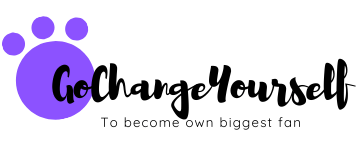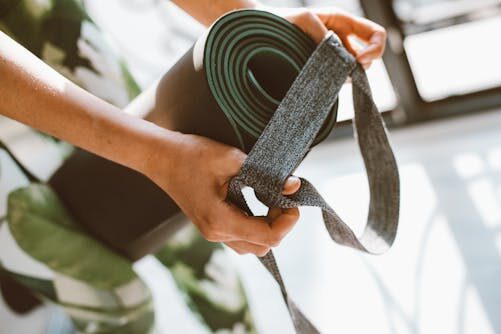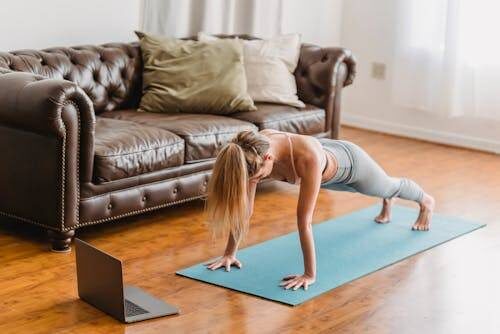In today’s fast-paced world, achieving a healthy, toned body doesn’t require expensive gym memberships or complicated equipment. Fitness at Home Without Equipment has become a game-changer for millions looking to get fit, stay motivated, and transform their bodies—all from the comfort of their own home.
In this article, we’ve curated 10 dynamic, power-packed moves that will not only challenge you but also deliver results in just 30 days. Whether you’re a beginner or a seasoned fitness enthusiast, this actionable plan is designed to boost your strength, endurance, and overall fitness. Let’s dive in!
Table of Contents
1. Burpees: The Full-Body Blast
Burpees are a powerhouse exercise that engage multiple muscle groups simultaneously. This move combines squats, push-ups, and explosive jumps to spike your heart rate and torch calories.
How to Do It:
- Start: Stand with your feet shoulder-width apart.
- Squat Down: Drop into a squat position with your hands on the floor.
- Kick Back: Jump your feet back into a push-up position.
- Push-Up (Optional): Perform a push-up for added intensity.
- Jump Forward: Return your feet to the squat position.
- Explode Upward: Jump as high as you can, reaching your arms overhead.
Actionable Tip: Aim for 3 sets of 10–15 burpees. Increase your pace gradually as your endurance improves.
2. Push-Ups: Building Upper Body Strength
Push-ups are a timeless exercise that work your chest, shoulders, triceps, and core—all without any equipment. They’re incredibly versatile, with variations to suit all fitness levels.
How to Do It:
- Start in a Plank: Keep your body straight from head to toe.
- Lower Your Body: Slowly lower your chest towards the floor.
- Push Up: Press through your palms to return to the starting position.
Actionable Tip: If you’re a beginner, modify the push-up by placing your knees on the ground. For a challenge, try explosive or diamond push-ups.
3. Squat Jumps: Ignite Lower Body Explosiveness
Squat jumps elevate a standard squat by adding an explosive jump, effectively working your glutes, quads, and hamstrings while boosting your cardiovascular endurance.
How to Do It:
- Begin with a Squat: Stand with feet shoulder-width apart and squat down.
- Jump Up: Explosively jump upward as high as possible.
- Land Softly: Return to a squat position upon landing to protect your joints.
Actionable Tip: Complete 3 sets of 10–12 squat jumps. Focus on soft landings to minimize impact on your knees.
4. Mountain Climbers: Core and Cardio Challenge
Mountain climbers are a dynamic exercise that improves core strength while providing a serious cardio workout. This move simulates the action of climbing, engaging your abs, legs, and shoulders.
How to Do It:
- Start in a Plank: Keep your body in a straight line.
- Drive Your Knees: Alternate driving your knees toward your chest at a rapid pace.
- Maintain Rhythm: Keep your core engaged throughout the exercise.
Actionable Tip: Set a timer for 30 seconds and aim for 3–4 rounds with short breaks in between.
5. Plank Variations: Mastering Core Stability
Planks are renowned for building core strength and stability. Adding variations such as side planks or plank jacks can intensify the workout and target additional muscle groups.
How to Do It:
- Standard Plank: Hold a push-up position with your elbows on the ground.
- Side Plank: Rotate your body onto one side, stacking your feet, and extend your free arm toward the ceiling.
- Plank Jacks: While holding a standard plank, jump your feet in and out like a jumping jack.
Actionable Tip: Hold each plank variation for 30–60 seconds. Rotate through different variations for a comprehensive core workout.
6. Reverse Plank: Strengthening the Posterior Chain
The reverse plank is an excellent exercise to target your back, glutes, and hamstrings, balancing the work done by traditional front planks. This move also improves shoulder stability and posture.
How to Do It:
- Sit on the Floor: Extend your legs straight out and place your hands behind you, fingers pointing toward your feet.
- Lift Your Hips: Press into your hands and heels to lift your hips, forming a straight line from your head to your feet.
- Hold: Maintain the position for as long as you can while keeping your core engaged.
Actionable Tip: Aim for a 30-second hold, gradually increasing the duration as your strength improves.
7. Reverse Lunges: Sculpting Your Legs
Reverse lunges effectively target your quadriceps, hamstrings, and glutes while enhancing balance and stability. They are a safer alternative to forward lunges, reducing the risk of knee injuries.
How to Do It:
- Stand Tall: Keep your feet hip-width apart.
- Step Back: Take a controlled step backward and lower your body until both knees are bent at 90 degrees.
- Return to Start: Push through your front heel to return to the starting position.
- Alternate: Switch legs with each repetition.
Actionable Tip: Perform 3 sets of 12–15 lunges per leg, focusing on form and controlled movements.
8. Bicycle Crunches: Abdominal Obsession
Bicycle crunches are a fun and effective way to target your abs and obliques. This exercise mimics a pedaling motion, engaging your core with every twist.
How to Do It:
- Lie on Your Back: Place your hands behind your head and lift your legs off the ground.
- Alternate Crunch: Bring your right elbow towards your left knee while extending your right leg.
- Switch Sides: Alternate sides in a continuous, controlled motion.
Actionable Tip: Aim for 3 sets of 20–25 repetitions per side, keeping a steady pace to maximize muscle engagement.
9. High Knees: Boosting Cardio and Agility
High knees are a high-intensity move that not only increases your heart rate but also improves agility and leg strength. This exercise is perfect for warming up or as part of a HIIT (High-Intensity Interval Training) circuit.
How to Do It:
- Stand in Place: Begin by jogging in place, driving your knees upward as high as possible.
- Pump Your Arms: Use your arms to maintain momentum and balance.
- Increase Speed: Gradually pick up the pace to keep your heart rate elevated.
Actionable Tip: Incorporate high knees for 30–45 seconds, rest for 15 seconds, and repeat for 3–4 rounds.
10. Flutter Kicks: Engaging Your Core
Flutter kicks are a simple yet effective exercise to target your lower abs and hip flexors. This move involves a continuous, scissor-like motion that challenges your core endurance.
How to Do It:
- Lie on Your Back: Place your hands under your glutes for support.
- Lift Your Legs: Raise both legs slightly off the ground.
- Alternate Kicks: Begin kicking your legs up and down in a fluttering motion.
- Keep It Steady: Maintain a consistent pace and engage your core throughout.
Actionable Tip: Perform flutter kicks for 30–45 seconds per set. Increase the duration gradually as your core strength improves.
Your 30-Day Actionable Plan for Success
Achieving transformation through Fitness at Home Without Equipment is all about consistency and progression. Here’s how to integrate these 10 power-packed moves into your daily routine:
- Warm-Up: Begin each workout session with a 5–10 minute warm-up (e.g., light jogging in place, dynamic stretches) to prepare your muscles and reduce injury risk.
- Circuit Training: Perform the 10 moves in a circuit. For example, complete one set of each move back-to-back with minimal rest in between.
- Rest & Recovery: Allow 30–60 seconds of rest between circuits. Aim for 3–4 circuits per session, depending on your fitness level.
- Frequency: Start with 3 sessions per week and gradually increase to 5 sessions per week as you build strength and endurance.
- Progress Tracking: Maintain a workout journal to track your repetitions, sets, and any improvements. This helps keep you motivated and accountable.
- Cool-Down: End each session with a cool-down period including static stretches to improve flexibility and reduce muscle soreness.
Following this actionable plan for 30 days will set you on the path to a leaner, stronger body without the need for any equipment. Remember, consistency is key—celebrate small victories along the way and adjust the intensity as you progress.
Conclusion
Embarking on a journey to achieve Fitness at Home Without Equipment is empowering and accessible to everyone. With these 10 power-packed moves, you now have a comprehensive, 30-day plan designed to transform your body, enhance your strength, and boost your overall fitness.
By incorporating explosive exercises like burpees and squat jumps with core-focused moves like planks and bicycle crunches, you create a balanced workout regimen that targets all major muscle groups.
No more excuses—your fitness journey begins now, right in the comfort of your home. Stay consistent, push your limits, and watch as your body transforms in just 30 days. Lace up your sneakers, clear some space, and get ready to conquer your fitness goals with determination and energy!
Happy training and here’s to a healthier, stronger you!]
FAQ:
Q1: What does “Fitness at Home Without Equipment” mean?
A: It refers to performing effective workouts using bodyweight exercises at home without relying on gym equipment.
Q2: What are the benefits of doing burpees in my workout routine?
A: Burpees engage multiple muscle groups simultaneously, boost cardiovascular endurance, and burn calories quickly.
Q3: How many burpees should I aim for in each set?
A: Start with 3 sets of 10–15 burpees, and gradually increase the number as your endurance improves.
Q4: How can beginners modify push-ups for a safer workout?
A: Beginners can modify push-ups by performing them on their knees, reducing resistance while still building strength.
Q5: What muscle groups do squat jumps target?
A: Squat jumps primarily work the glutes, quadriceps, and hamstrings, while also enhancing cardiovascular fitness.
Q6: How do mountain climbers help improve my core strength?
A: Mountain climbers rapidly alternate knee drives toward the chest, engaging your abs, obliques, and shoulders for a full-body cardio and core workout.
Q7: What are some effective plank variations to include in my routine?
A: Incorporate standard planks, side planks, and plank jacks to target different areas of your core and improve overall stability.
Q8: How long should I hold a plank for maximum benefit?
A: Aim to hold each plank variation for 30–60 seconds, gradually increasing the duration as you build core strength.
Q9: What is the purpose of the reverse plank exercise?
A: The reverse plank strengthens your back, glutes, and hamstrings while improving shoulder stability and posture.
Q10: How do reverse lunges contribute to a balanced lower body workout?
A: Reverse lunges target the quadriceps, hamstrings, and glutes while enhancing balance and stability, with a lower risk of knee injury compared to forward lunges.
Q11: What is the correct form for performing bicycle crunches?
A: Lie on your back with your hands behind your head and alternate bringing your elbows to the opposite knee in a controlled, pedaling motion.
Q12: How do high knees boost my workout intensity?
A: High knees elevate your heart rate, improve agility, and strengthen your leg muscles by mimicking a high-intensity jogging motion.
Q13: Which muscles are primarily engaged during flutter kicks?
A: Flutter kicks primarily target the lower abs and hip flexors, helping to build core endurance.
Q14: How often should I perform this 30-day workout plan?
A: Begin with 3 sessions per week and gradually increase to 5 sessions per week as your strength and endurance improve.
Q15: What should be included in my warm-up before starting these exercises?
A: A warm-up should consist of 5–10 minutes of light cardio and dynamic stretching to prepare your muscles and reduce injury risk.
Q16: How can I structure my workout circuits effectively?
A: Perform one set of each exercise consecutively with minimal rest, take a 30–60 second break between circuits, and aim for 3–4 circuits per session.
Q17: What is the best way to track progress during this 30-day challenge?
A: Keep a workout journal to log sets, repetitions, and improvements in endurance and strength, which helps maintain motivation and track progress.
Q18: Are these exercises suitable for all fitness levels?
A: Yes, these exercises can be modified to match any fitness level, making them accessible for beginners and challenging for advanced practitioners.
Q19: What should I do if I experience pain or discomfort while performing these moves?
A: Stop immediately, assess your form, and if the pain persists, consult a fitness professional or healthcare provider before continuing.
Q20: Can I combine these home workouts with other types of exercise?
A: Absolutely! You can complement these bodyweight exercises with other cardio, strength training, or flexibility routines for a balanced fitness program.
-
10 Power-Packed Moves for Fitness at Home Without Equipment: Transform Your Body in Just 30 Days!
In today’s fast-paced world, achieving a healthy, toned body doesn’t require expensive gym memberships or complicated equipment. Fitness at Home Without Equipment has become a game-changer for millions looking to get fit, stay motivated, and transform their bodies—all from the comfort of their own home. In this article, we’ve curated 10 dynamic, power-packed moves that…
-
Why am I so Lazy in the Morning? | Shocking Reasons & Life-Changing Hacks to Boost Energy!
Do you constantly hit the snooze button, struggle to get out of bed, and feel sluggish in the morning? If you’re asking yourself, “Why am I so lazy in the morning?”, you’re not alone. Many people experience low energy levels in the early hours, making it difficult to start the day productively. But what if…
-
Unlock the Hidden Power of Emotional Intelligence: 8 Game-Changing Strategies to Transform Your Life
In today’s fast-paced world, success isn’t just determined by IQ or technical skills—it’s also about how well you understand and manage your emotions. Emotional Intelligence is the secret ingredient that fuels personal and professional growth. By harnessing this power, you can improve your relationships, boost your decision-making skills, and navigate life’s challenges with confidence. In…







